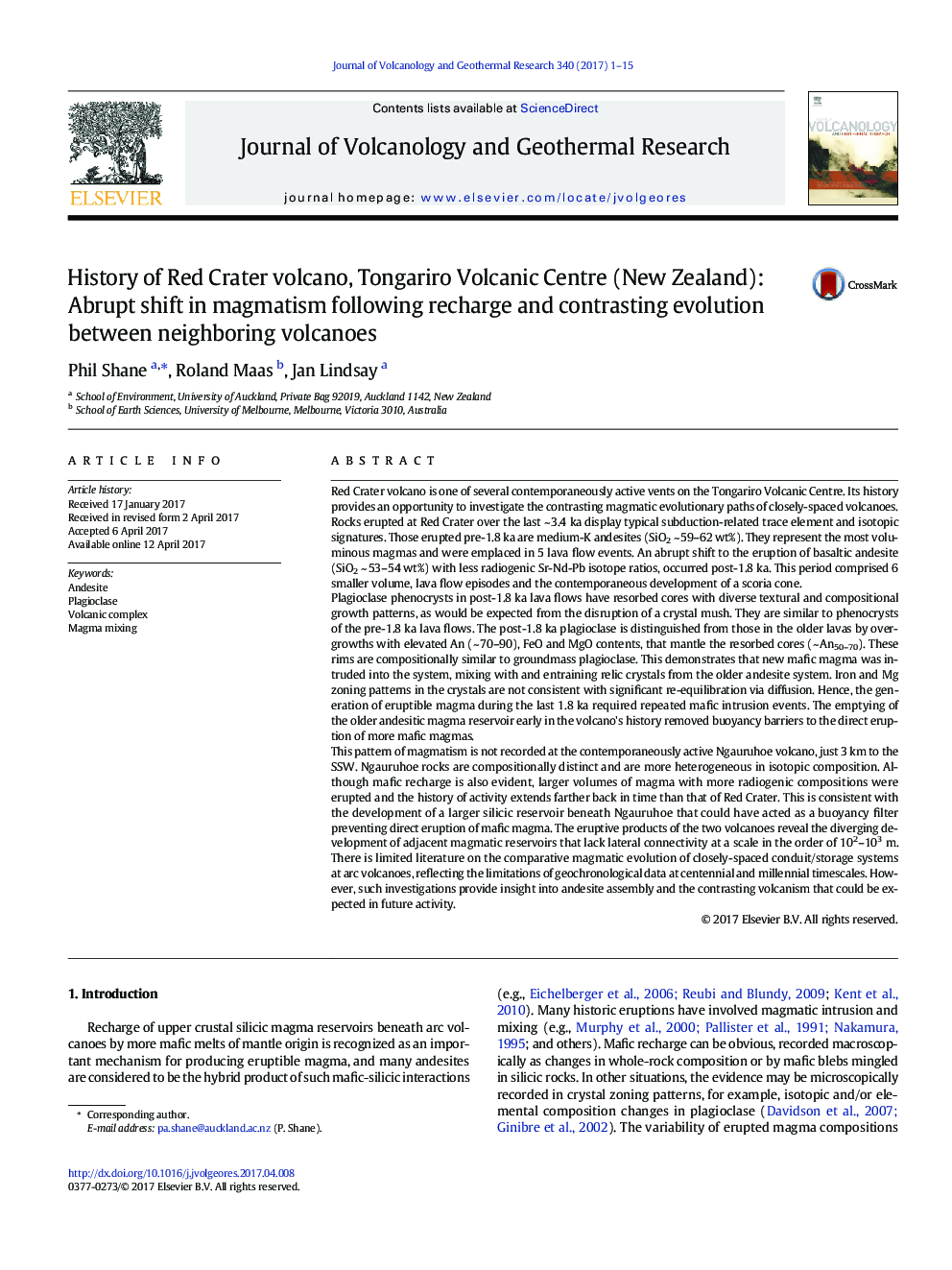| کد مقاله | کد نشریه | سال انتشار | مقاله انگلیسی | نسخه تمام متن |
|---|---|---|---|---|
| 5783668 | 1638283 | 2017 | 15 صفحه PDF | دانلود رایگان |

- 1.8Â ka mafic recharge of Red Crater magmatic reservoir
- Plagioclase crystals record multiple short-lived intrusions.
- Neighboring Ngauruhoe volcano records a different history.
- Subterranean plumbing systems control style and compositions of magmas.
Red Crater volcano is one of several contemporaneously active vents on the Tongariro Volcanic Centre. Its history provides an opportunity to investigate the contrasting magmatic evolutionary paths of closely-spaced volcanoes. Rocks erupted at Red Crater over the last ~Â 3.4Â ka display typical subduction-related trace element and isotopic signatures. Those erupted pre-1.8Â ka are medium-K andesites (SiO2 ~Â 59-62Â wt%). They represent the most voluminous magmas and were emplaced in 5 lava flow events. An abrupt shift to the eruption of basaltic andesite (SiO2 ~Â 53-54Â wt%) with less radiogenic Sr-Nd-Pb isotope ratios, occurred post-1.8Â ka. This period comprised 6 smaller volume, lava flow episodes and the contemporaneous development of a scoria cone.Plagioclase phenocrysts in post-1.8Â ka lava flows have resorbed cores with diverse textural and compositional growth patterns, as would be expected from the disruption of a crystal mush. They are similar to phenocrysts of the pre-1.8Â ka lava flows. The post-1.8Â ka plagioclase is distinguished from those in the older lavas by overgrowths with elevated An (~Â 70-90), FeO and MgO contents, that mantle the resorbed cores (~Â An50-70). These rims are compositionally similar to groundmass plagioclase. This demonstrates that new mafic magma was intruded into the system, mixing with and entraining relic crystals from the older andesite system. Iron and Mg zoning patterns in the crystals are not consistent with significant re-equilibration via diffusion. Hence, the generation of eruptible magma during the last 1.8Â ka required repeated mafic intrusion events. The emptying of the older andesitic magma reservoir early in the volcano's history removed buoyancy barriers to the direct eruption of more mafic magmas.This pattern of magmatism is not recorded at the contemporaneously active Ngauruhoe volcano, just 3Â km to the SSW. Ngauruhoe rocks are compositionally distinct and are more heterogeneous in isotopic composition. Although mafic recharge is also evident, larger volumes of magma with more radiogenic compositions were erupted and the history of activity extends farther back in time than that of Red Crater. This is consistent with the development of a larger silicic reservoir beneath Ngauruhoe that could have acted as a buoyancy filter preventing direct eruption of mafic magma. The eruptive products of the two volcanoes reveal the diverging development of adjacent magmatic reservoirs that lack lateral connectivity at a scale in the order of 102-103Â m. There is limited literature on the comparative magmatic evolution of closely-spaced conduit/storage systems at arc volcanoes, reflecting the limitations of geochronological data at centennial and millennial timescales. However, such investigations provide insight into andesite assembly and the contrasting volcanism that could be expected in future activity.
Journal: Journal of Volcanology and Geothermal Research - Volume 340, 15 June 2017, Pages 1-15